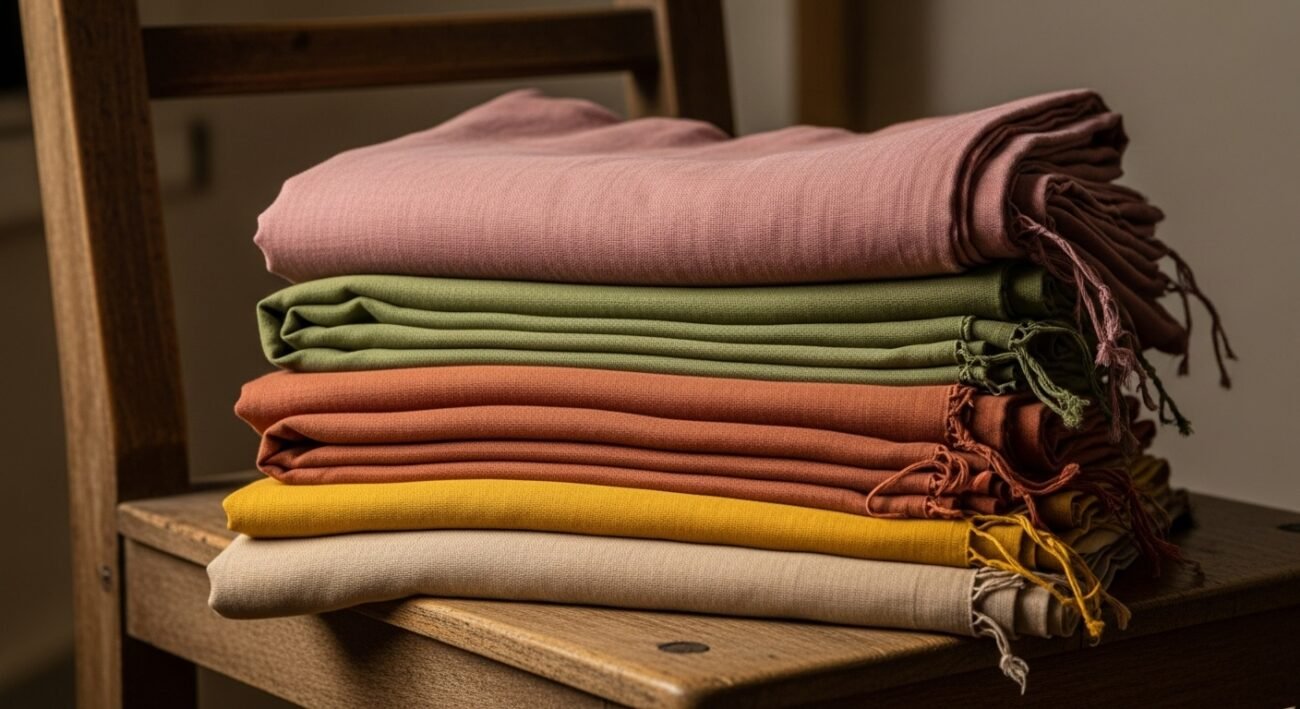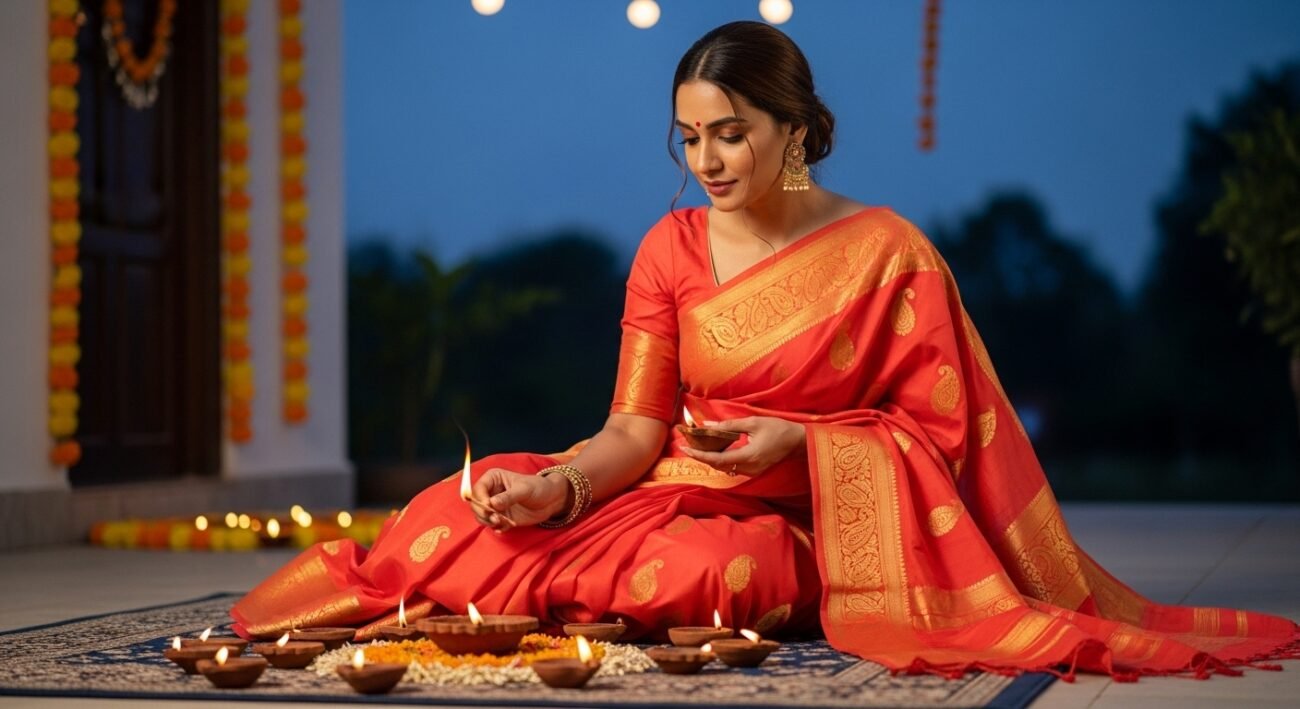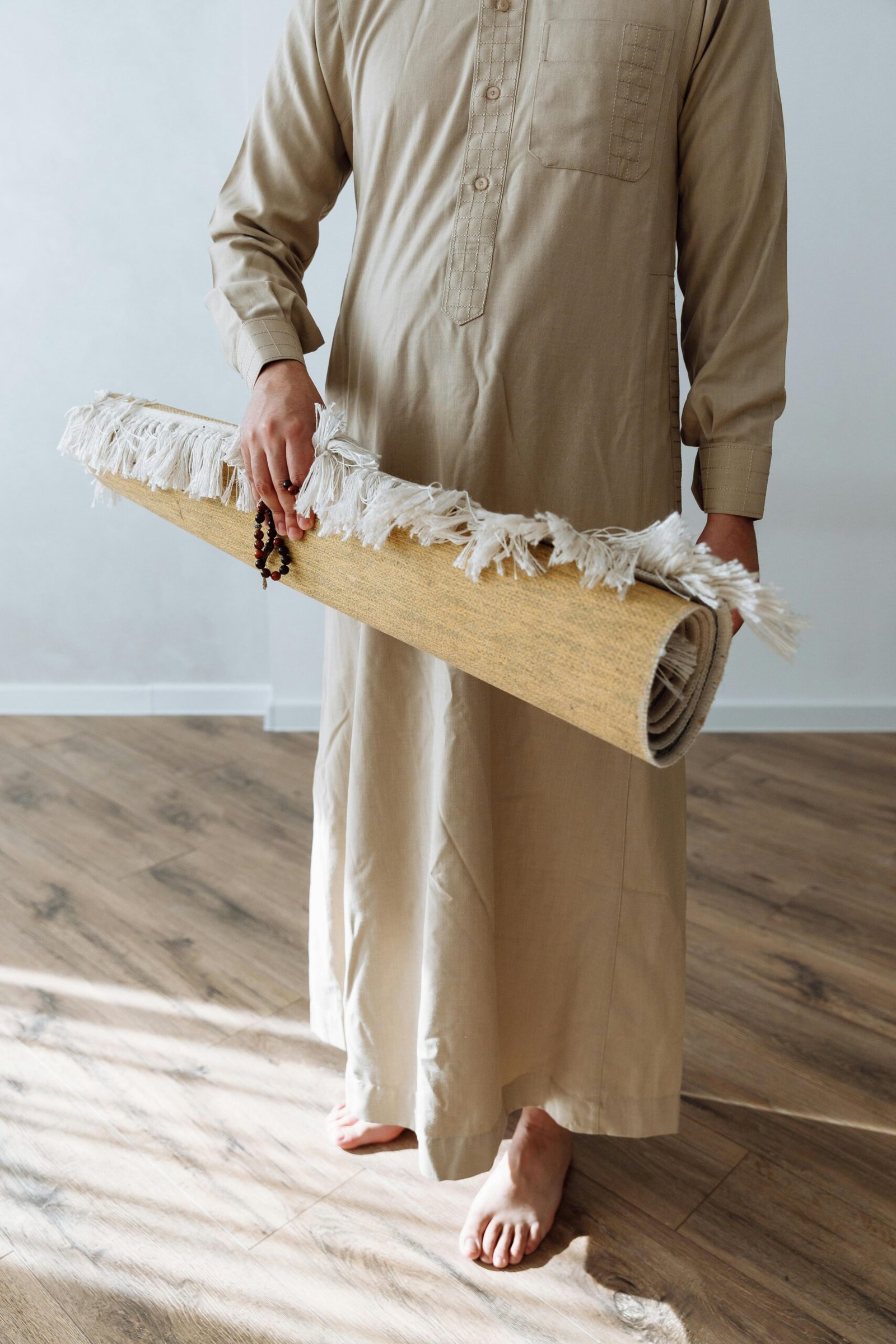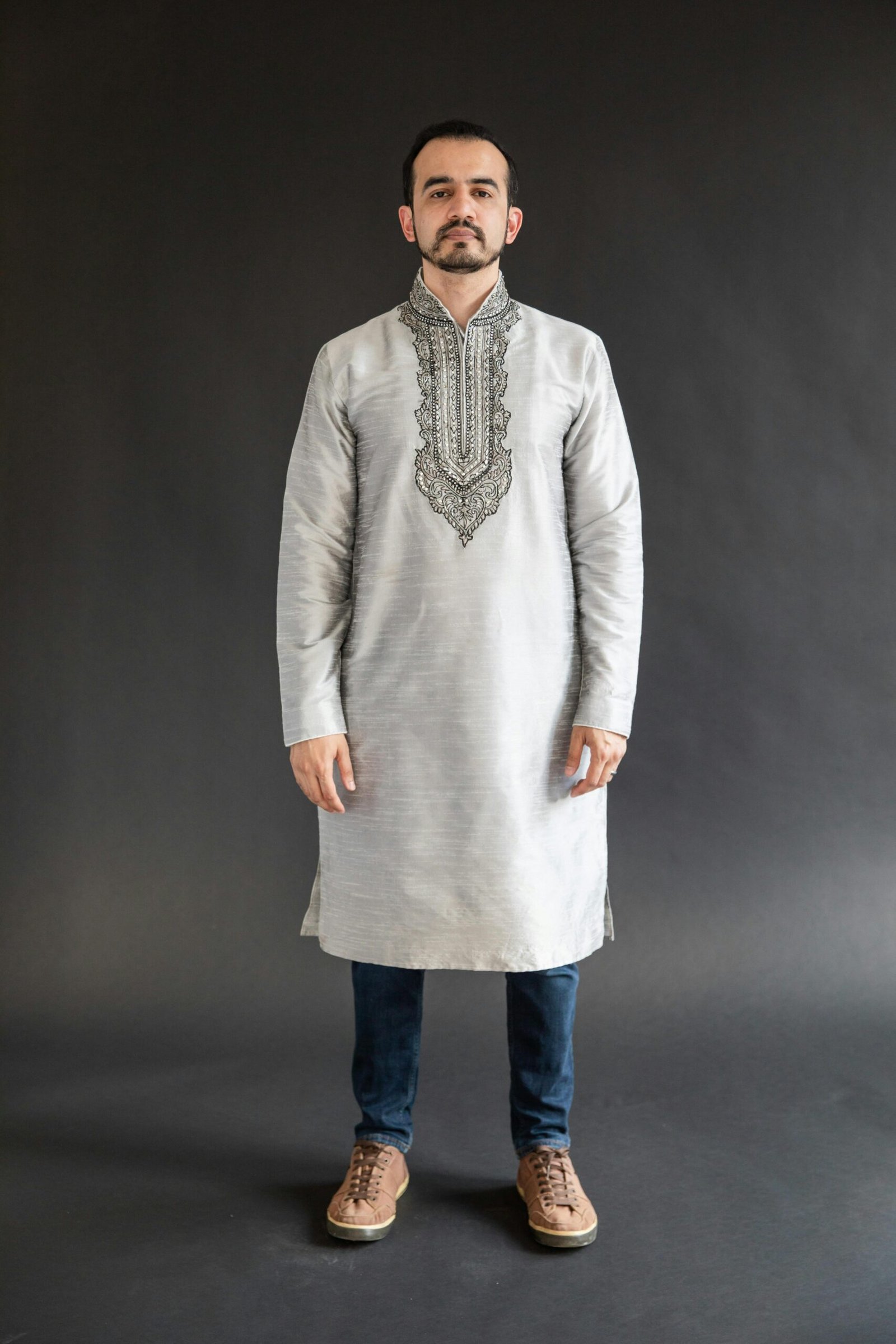Cotton sarees have a unique charm, don’t they? They don’t captivate you with their gleam. Neither do they command you to carry yourself in a particular manner in order to look attractive. They’re straightforward. Truthful. Almost defiant in their ease. And within India and pretty much everywhere else the saree takes its road trip a cotton saree for women had always been the one with no fuss, always around.
The cotton sarees were the major ones that my grandmother used to wear in the morning. There were also a few that were quite stiff and starch heavy only for temple days. And some bright zari bordered cotton saris for Diwali. No “special wardrobe section.” They were just the same shelf, which is now quite old and still kept the scent of coconut oil and sunlight mingling from the fabrics that were decorated with it.
What about these days? The cotton saree for women has been modernized. You can still find them in the traditional way in the markets, teachers, nurses, and small shop owners wear them but also on Instagram feeds where they are styled by twenty year old with the trendy sneakers. They are being mixed with belts, denim jackets, graphics tee as blouses. They have somehow penetrated the regular wardrobes of the modern without actually being one of them.
Why Cotton Sarees Still Matter (and probably always will)
Still, silk has its own place. Georgette for sure. But cotton just fits the bill. It’s the fabric one would choose to wear every day without even giving it a second thought.
Cotton doesn’t overheat you. It lets your skin breathe. Even if the temperature is on its highest note in summer, a pure cotton saree will not be suffocating as synthetic blends will. It takes in your sweat (maybe too much, at times, it is the reason why little water marks are there but that is the reality of life).
It works differently as well as most fabrics. The softer your cotton saree is, the more it will be felt with every wear.That original crispness is slowly taken over by a kind of slouchy comfort like when you have broken in your good denim.
Moreover, cotton is flexible. You can starch it to the fullest so that it looks very formal and sharp. Or, if you want to go for a completely different vibe, you can put the iron away and let it drape softly for a lazy Sunday style.

The Big (and Often Overlooked) Variety of Cotton Sarees
Most people think of a starched, plain, office-wear type when they hear the term “cotton saree.” There is a wide range of cotton weaves, textures, and finishes. As soon as you begin to explore, you will realize that cotton sarees for women are not one-dimensional at all.
1. Soft Cotton Sarees
These sarees are the ones you cannot live without. They drape without any problem and are very accommodating when you are in a hurry, and they do not require a tightly fitted petticoat. A lot of them come pre-washed, so you do not have to tolerate that awkward “new saree” stage.
These sarees are suitable for long office hours, train journeys, or family events. Most of the soft pure cotton sarees are now manufactured in pastel colors, with minimal stripes and even abstract block prints.
2. Printed Cotton Saree
Block-printed, digitally printed, or hand-painted prints are one of the reasons that plain cotton doesn’t get boring. How about a floral printed cotton saree complemented with kolhapuri chappals for that easy-breezy look? Pairing something like this with accessories from VastGent’s summer outfit collection means your warm-weather style is sorted in no time.
Block prints like Bagru or Ajrakh not only make the fabric rich in colour but also add cultural depth to the piece. Their roots are in certain areas but these prints are going well not only with traditional clothes but also with modern styling.
3. Cotton Mulmul Saree
The softness of mulmul which is almost transparent is not something anyone can match. It is so breathable that you still won’t feel like you have put on a six-yard drape. The downside? It gets wrinkled quickly and after an hour, it can look like the fabric has been crushed. But that rumpled look works if coupled with a relaxed, styled as you have lived in it somehow.
4. Plain Cotton Saree
Minimal, solid colors. The cotton saree can be easily dressed up or down. Put on a loud blouse and chunky jewelry for festivals, or a crisp white shirt for office, it is your call.
5. Cotton Ki Sadi
This is the daily Hindi phrase people use for cotton saree specifically in smaller towns. Typically these are the ones that are sturdy, practical, and easily washable at home. They are usually available in street-side markets at very affordable prices.

Everyday Picks For When You Don’t Want to Overthink
Cotton saree for a daily wear has a certain charm and can never be replaced by any other piece of cloth for women. No slippery pleats, no worry if the pallu will fall off or get unfolded. It is not a garment, rather it is the kind of clothing one can actually live in cook in, run errands in, even nap in (guilty).
Here is the list of the different types of everyday-friendly cotton sarees with their features and styling suggestions:
| Type | Why It Works Daily | Style Tip |
| Soft Cotton | Breathable, minimal fuss | Wear with minimal jewelry for a clean look |
| Plain Cotton Saree | Goes with anything | Pair with statement blouse |
| Printed Cotton Saree | Disguises wrinkles | Add neutral sandals |
| Mulmul | Ultra-lightweight | Good for layering |
Festive Cotton Saree Collection Yes, Cotton Can Party Too
There are people who believe that cotton is a too simple fabric to be used for festival purposes. This is just because they have not seen the right cotton saree collection.
Often the cotton saree for women the festival presents are:
- Gold or silver zari borders
- Handloom weaves such as Chanderi cotton
- Bright jewel tones like emerald, maroon, or mustard
- Woven motifs instead of printed designs
For a traditional ceremony where you want to look elegant but still remain comfortable, a pure cotton saree with a delicate zari pallu is your perfect choice.
Regional Cotton Sarees Worth Knowing
For a deeper dive into the cotton saree world, you’ll find discovering the regional varieties quite fascinating. The unique character of each one.
- Bengal Tant Saree – Crisp, lightweight, with woven borders. Perfect for hot, humid climates.
- Kota Doria – Sheer, airy, with delicate square patterns in the weave.
- Chanderi Cotton – Mild luster, typically a silk-cotton blend but pure cotton version also available.
- Kerala Kasavu Cotton – White or cream base with gold border, the symbol of Onam.
- Sambalpuri Cotton – Handwoven with complex ikat patterns.
The fabric aren’t just choosing they are very closely linked with traditions, festivals, and even certain ways of draping.
Styling Cotton Sarees in 2025
The best thing about cotton sarees now? No one’s following “rules” anymore.
- Belts: Cinch at the waist over a saree for women cotton style for definition.
- Layering: Denim jackets, long cardigans, even hoodies (yes, people are doing this).
- Footwear Switch: Sneakers with a soft cotton saree? Comfortable and oddly chic.
- Blouse Play: Crop tops, shirts, even knit sweaters acting as blouses.
Buying Cotton Sarees Online A Few Things to Watch
Shopping for cotton sarees online can be quite challenging as one cannot feel the fabric.
Tips:
- Read GSM (grams per square meter) lower means lighter, higher means heavier.
- Check if it’s mercerized this makes cotton slightly shinier and more durable.
- Look for handloom certification if that’s important to you.
- Beware of colors some pure cotton dyes look brighter in photos than in real life.
Why People Love Pure Cotton
A lot of “cotton sarees” out there are blends. Blends have their advantages fewer creases, often cheaper but they don’t feel the same.
Pure cotton sarees have a certain drape and fall that’s hard to imitate. They also acquire body memory after wearing them a couple of times, they pleat almost by themselves.
Care Tips So Your Cotton Sarees Last
- First wash: Hand wash separately cotton bleeds color early.
- Dry in shade to prevent fading.
- Fold and store with neem leaves to keep bugs away.
- Avoid hanging for long periods cotton will stretch over time.
FAQs – From Google’s “People Also Ask”
Q1. Which cotton saree is best for daily use?
Soft cotton sarees or mulmul cotton sarees are best for daily wear as they’re breathable and comfortable.
Q2. How can I identify pure cotton saree?
It wrinkles quickly, feels cool to the touch, and has a dull texture. The burn test (if done safely) results in ash, not melted residue.
Q3. Is cotton saree good for summer?
Yes, cotton sarees are very breathable and can absorb your sweat, hence they are perfect for hot weather.
Q4. Which cotton saree is best for festivals?
Handloom cotton with zari borders or vibrant prints gives the perfect festive attire.
Q5. Does cotton saree shrink after washing?
Pure cotton might shrink a little after the first wash if it is not pre-washed or mercerized.

Kashaan Kapoor is a skilled fashion writer with over 5 years of experience creating content and blogs about clothing and style. He blends trend insights with timeless fashion advice to keep readers stylish and informed.





